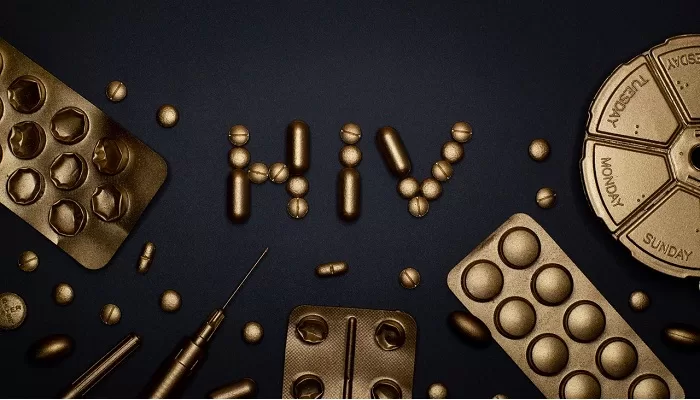Health
Acquired Immunodeficiency Syndrome (AIDS)

AIDS is the most advanced stage of infection caused by HIV. The names HIV and AIDS can be confusing because both terms describe the same disease. Most people who are living with HIV do not have AIDS. And most people with HIV will not develop AIDS if they start treatment (with medicines called antiretroviral therapy or ART) soon after becoming infected. A person living with HIV is said to have AIDS when their immune system becomes so weak it can’t fight off certain kinds of infections and cancers, such as PCP (a type of pneumonia), KS (Kaposi sarcoma, a type of cancer that affects the skin and internal organs), wasting syndrome (involuntary weight loss), memory impairment, or tuberculosis.
Even without one of these infections, a person living with HIV is diagnosed with AIDS if their immune system weakens, as indicated by the number of CD4 cells. But, again, it is important to remember that most people with HIV will not develop AIDS if they start treatment soon after becoming infected.
HOW
To become infected with HIV, infected blood, semen or vaginal secretions must enter your body. This can happen in several ways:
- By Practicing Unsafe sex. You may become infected if you have vaginal, anal or oral sex with an infected partner whose blood, semen or vaginal secretions enter your body. The virus can enter your body through mouth sores or small tears that sometimes develop in the rectum or vagina during sexual activity.
- By sharing needles. Sharing contaminated IV drug paraphernalia (needles and syringes) puts you at high risk of HIV and other infectious diseases, such as hepatitis.
- From blood transfusions. In some cases, the virus may be transmitted through blood transfusions. American hospitals and blood banks now screen the blood supply for HIV antibodies, so this risk is very small.
- During pregnancy or delivery or through breast-feeding. Infected mothers can pass the virus on to their babies. Mothers who are HIV-positive and get treatment for the infection during pregnancy can significantly lower the risk to their babies.
When HIV destroys CD4 T cells — white blood cells that play a large role in helping your body fight disease. The fewer CD4 T cells you have, the weaker your immune system becomes.
You can have an HIV infection, with few or no symptoms, for years before it turns into AIDS. AIDS is diagnosed when the CD4 T cell count falls below 200 or you have an AIDS-defining complication, such as serious infection or cancer.
The chances of HIV progressing to AIDS vary widely from person to person and depend on many factors, including the:
- person’s age
- body’s ability to defend against HIV
- accessibility of quality healthcare
- presence of other infections
- person’s genetic resistance to certain strains of HIV
- strain of HIV, as some are drug-resistant
SYMPTOMS
AIDS refers to acquired immunodeficiency syndrome. With this condition, the immune system is weakened due to HIV that’s typically gone untreated for many years.
If HIV is found and treated early with antiretroviral therapy, a person will usually not develop AIDS.
People with HIV may develop AIDS if their HIV is not diagnosed until late or if they know they have HIV but don’t consistently take their antiretroviral therapy.
They may also develop AIDS if they have a type of HIV that’s resistant to (doesn’t respond to) the antiretroviral treatment.
Without proper and consistent treatment, people living with HIV can develop AIDS sooner. By that time, the immune system is quite damaged and has a harder time generating a response to infection and disease.
With the use of antiretroviral therapy, a person can maintain a chronic HIV diagnosis without developing AIDS for decades.
Symptoms of AIDS can also include:
- recurrent fever
- chronic swollen lymph glands, especially of the armpits, neck, and groin
- chronic fatigue
- night sweats
- dark splotches under the skin or inside the mouth, nose, or eyelids
- sores, spots, or lesions of the mouth and tongue, genitals, or anus
- bumps, lesions, or rashes of the skin
- recurrent or chronic diarrhoea
- rapid weight loss
- neurologic problems such as trouble concentrating, memory loss, and confusion
- anxiety and depression
Antiretroviral therapy controls the virus and usually prevents progression to AIDS. Other infections and complications of AIDS can also be treated. That treatment must be tailored to the individual needs of the person.
- HIV continues to be a major global public health issue, having claimed almost 33 million lives so far. However, with increasing access to effective HIV prevention, diagnosis, treatment and care, including for opportunistic infections, HIV infection has become a manageable chronic health condition, enabling people living with HIV to lead long and healthy lives.
- There were an estimated 38.0 million people living with HIV at the end of 2019.
- As a result of concerted international efforts to respond to HIV, coverage of services has been steadily increasing. In 2019, 68% of adults and 53% of children living with HIV globally were receiving lifelong antiretroviral therapy (ART).
- A great majority (85%) of pregnant and breastfeeding women living with HIV also received ART, which not only protects their health, but also ensures prevention of HIV transmission to their newborns.
- However, not everyone is able to access HIV testing, treatment and care. Notably, the 2018 Super-Fast-Track targets for reducing new pediatric HIV infections to 40 000 was not achieved. Global targets for 2020 are at risk of being missed unless rapid action is taken.
- Due to gaps in HIV services, 690 000 people died from HIV-related causes in 2019 and 1.7 million people were newly infected.
- Key population groups and their sexual partners accounted for over 60% of all new HIV infections globally among the age group 15-49 years (an estimated 62%) in 2019. In eastern European and central Asia, Asia and the Pacific, western and central Europe and north America and Middle East and north Africa, these groups accounted for over 95% of new HIV infections in each of these regions.
- HIV can be diagnosed through rapid diagnostic tests that can provide same-day results. HIV self-tests are increasingly available and provide an effective and acceptable alternative way to increase access to people who are not reached for HIV testing through facility-based services. Rapid test and self-tests have greatly facilitated diagnosis and linkage with treatment and care.
- At the end of 2019, 25.4 million people were accessing antiretroviral therapy.
- Between 2000 and 2019, new HIV infections fell by 39% and HIV-related deaths fell by 51%, with 15.3 million lives saved due to ART. This achievement was the result of great efforts by national HIV programmers supported by civil society and international development partners.
- The Sixty-Ninth World Health Assembly endorsed a new “Global health sector strategy on HIV for 2016–2021”. The strategy includes five strategic directions that guide priority actions by countries and by WHO over six years.
- The strategic directions are:
- Information for focused action (know your epidemic and response)
- Interventions for impact (covering the range of services needed)
- Delivering for equity (covering the populations in need of services)
- Financing for sustainability (covering the costs of services)
- Innovation for acceleration (looking towards the future).
WHO is a co-sponsor of the Joint United Nations Program on AIDS (UNAIDS). Within UNAIDS, WHO leads activities on HIV treatment and care, and HIV and TB coinfection, and jointly coordinate the work on elimination of MTCT of HIV with UNICEF.
TREATMENT
Currently, there’s no cure for HIV/AIDS. Once you have the infection, your body can’t get rid of it. However, there are many medications that can control HIV and prevent complications. These medications are called antiretroviral therapy (ART). Everyone diagnosed with HIV should be started on ART, regardless of their stage of infection or complications.
ART is usually a combination of three or more medications from several different drug classes. This approach has the best chance of lowering the amount of HIV in the blood. There are many ART options that combine three HIV medications into one pill, taken once daily.
There’s no vaccine to prevent HIV infection and no cure for AIDS. But you can protect yourself and others from infection.
To help prevent the spread of HIV:
- Use treatment as prevention (TasP). If you’re living with HIV, taking HIV medication can keep your partner from becoming infected with the virus. If you make sure your viral load stays undetectable — a blood test doesn’t show any virus — you won’t transmit the virus to anyone else. Using TasP means taking your medication exactly as prescribed and getting regular checkups.
- Use post-exposure prophylaxis (PEP) if you’ve been exposed to HIV. If you think you’ve been exposed through sex, needles or in the workplace, contact your doctor or go to the emergency department. Taking PEP as soon as possible within the first 72 hours can greatly reduce your risk of becoming infected with HIV. You will need to take medication for 28 days.
- Use a new condom every time you have sex. Use a new condom every time you have anal or vaginal sex. Women can use a female condom. If using a lubricant, make sure it’s water-based. Oil-based lubricants can weaken condoms and cause them to break. During oral sex use a nonlubricated, cut-open condom or a dental dam — a piece of medical-grade latex.
- Tell your sexual partners if you have HIV. It’s important to tell all your current and past sexual partners that you’re HIV-positive. They’ll need to be tested.
- Use a clean needle. If you use a needle to inject drugs, make sure it’s sterile and don’t share it. Take advantage of needle-exchange programs in your community. Consider seeking help for your drug use.
- If you’re pregnant, get medical care right away. If you’re HIV-positive, you may pass the infection to your baby. But if you receive treatment during pregnancy, you can significantly cut your baby’s risk.
- Consider male circumcision. There’s evidence that male circumcision can help reduce the risk of getting HIV infection.






















































